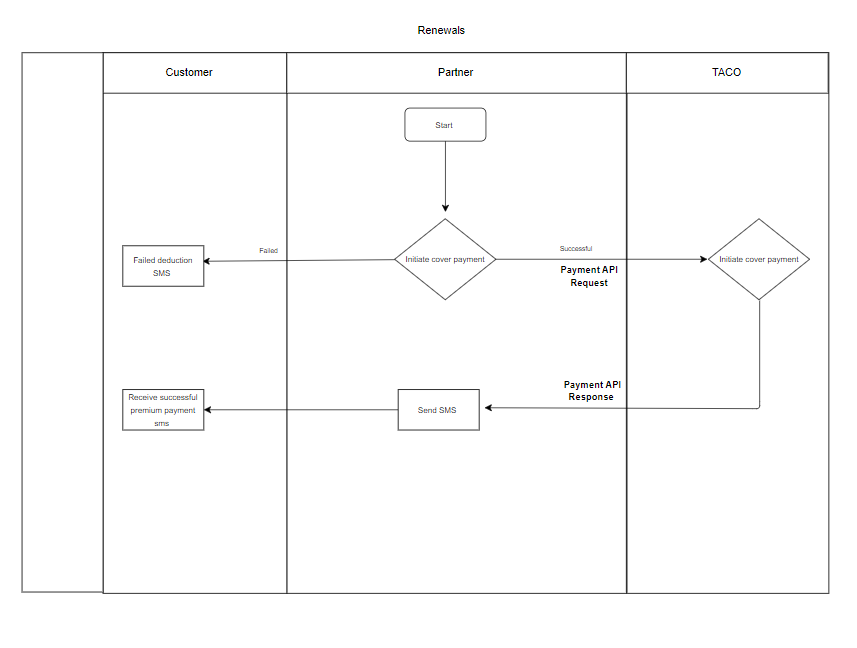This use case tries to give a typical example of how the API may be used. It does not in any way limit the integration options to this flow.
This section illustrates the creation of policies for an Opt-in Product, and compares it to the creation of policies for an Embedded Product.
An Embedded Product refers to insurance that is provided as an additional feature when purchasing another product. In contrast, an Opt-in Product is when a customer actively chooses to purchase an insurance product by directly signing up for it.
When designing the policy for an Embedded Product, the focus is on integrating insurance coverage seamlessly into the main product. On the other hand, the policy for an Opt-in Product is designed to attract and engage customers to make independent decisions about acquiring insurance.
Now that we have an understanding of what these two types of products are, lets take a look at the various API integrations that can be used to create customer policies for each product type.
Opt-in (USSD Option)
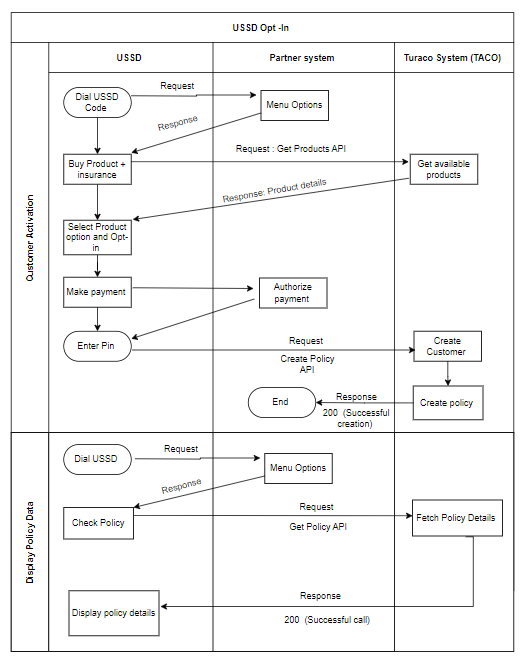
Opt-in (App Option)
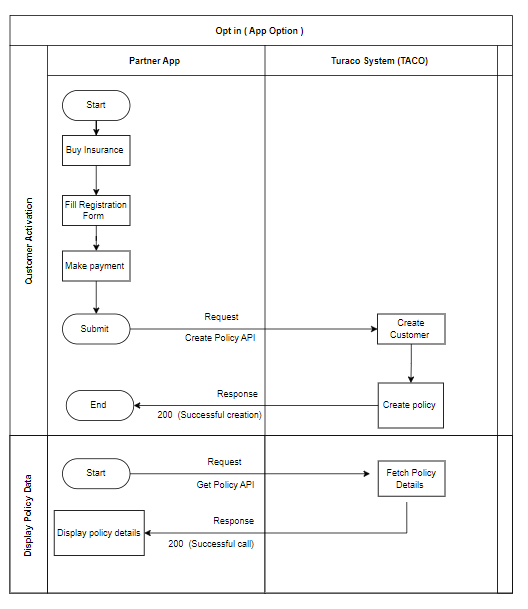
Embedded Product
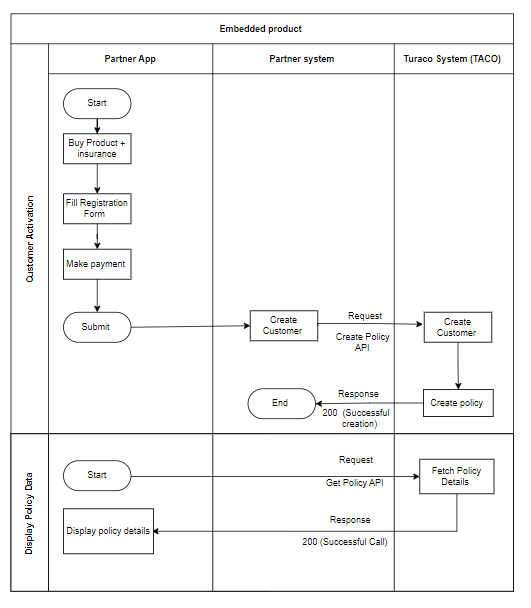
Creating a claim and uploading documents.
Some partners prefer to give their customers the option to directly report a claim through the partner app/platform.
When reporting a claim, the user will be required to select a incident type and a benefit they are claiming against to enable the system to identify the documents that would be required for upload to enable processing of the claim. These can be obtained by using the Get All Incident Types and Get All Policy Benefits APIs.
Documents to be uploaded can either be a PDF, word document or an image.
Below is an example of a simple claims creation flow.
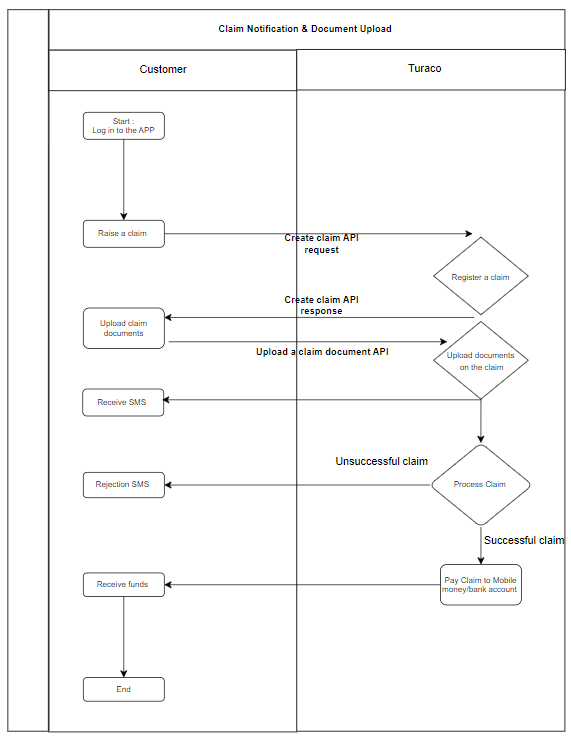
Payments.
There are instances where a customer would be allowed to sign up for a product and make a payment towards their cover later. In such instances, you would apply the use of the Create Policy API to create a policy, which remain inactive until Turaco are notified of the customer's payments by the partner.
The Payments API is used to notify Turaco of payments submitted by the customer. Once notified, Turaco will activate the policy and consider the customer to be on cover.
Here is an example of a customer onboarding flow that includes payment notification:
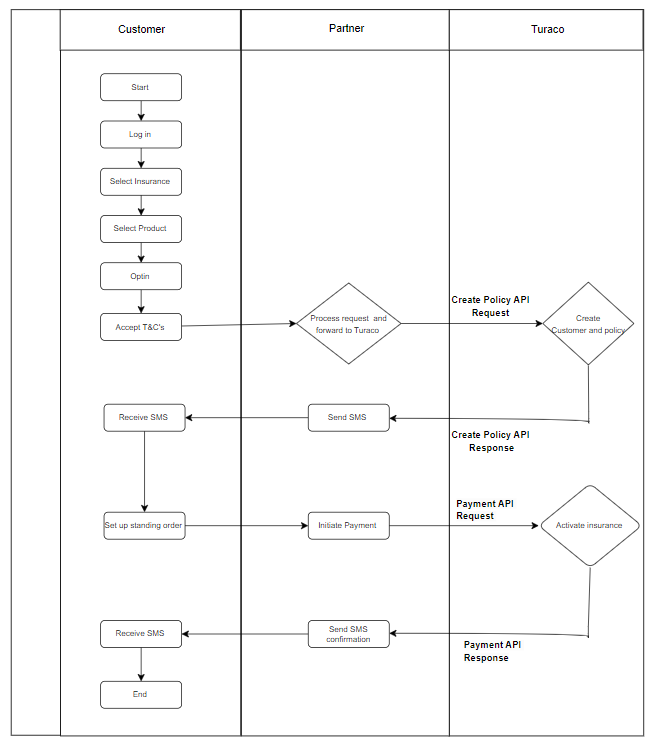
We also have instances, customers allow the partner to automatically deduct payments on their behalf towards insurance. Below is what a recurring payments journey would look like:
